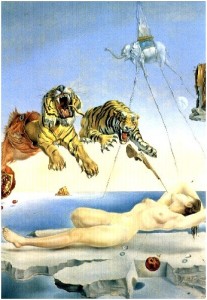I recently came across an ancient document, older than my son, dating to 1994 when I had a brief FAX-based exchange of communiques with Brian Eno, the English eclectic electronic musician and producer of everything from Bowie’s Low through to U2’s Joshua Tree and Jane Siberry. Eno had been pointed at one of my colleague’s efforts (Eric in the FAXes, below) at using models of RNA replication to create music by the editor of Whole Earth Catalog who saw Eric present at an Artificial Life conference. I was doing other, somewhat related work, and Eric allowed me to correspond with Mr. Eno. I did, resulting in a brief round of FAXes (email was fairly new to the non-specialist in 1994).
I later dropped off a copy of a research paper I had written at his London office and he was summoned down from an office/loft and shook his head in the negative about me. I was shown the door by the receptionist.
Below is my last part of the FAX interchange. Due to copyright and privacy concerns, I’ll only show my part of the exchange (and, yes, I misspelled “Britain”). Notably, Brian still talks about the structure of music and art in recent interviews.










